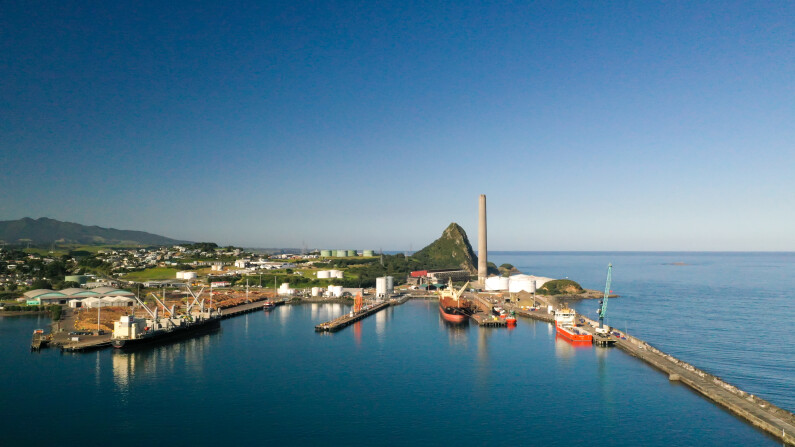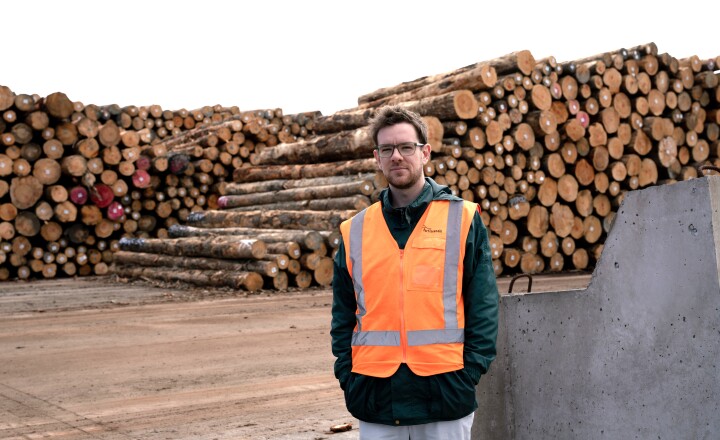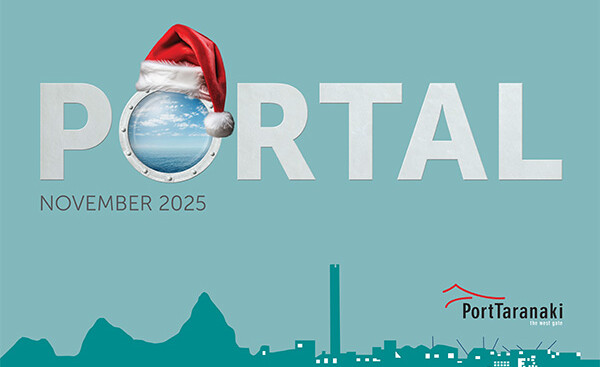
Port Taranaki has recorded an improved result for the first half of the 2020-21 financial year, although increased repairs and maintenance costs and challenging trading conditions in the second half are expected to impact the company’s full-year profitability.
For the six months to 30 December 2020, Port Taranaki recorded net profit after tax of $5.46 million, a 3% increase on the $5.31 million recorded for the corresponding six months in 2019.
Revenue for the half-year was $25.85 million, $830,000 up on the same period the previous year.
Port Taranaki chief executive Guy Roper said the result was pleasing, particularly as the port’s largest trade – bulk liquids – was down 16%, or 311,000 tonnes. This impacted total trade, which was down 2% from 2.73 million tonnes to 2.68 million tonnes, and vessel visits, down from 138 to 129.
“The drop in bulk liquids trade was driven primarily by reduced methanol trade, which was 20% lower than the prior half-year, and crude oil trade, which was down 11%,” Mr Roper said.
Mr Roper said constrained gas supplies in the second six months of the financial year would continue to impact bulk liquids volumes. This, coupled with extraordinary repairs and maintenance costs associated with the continuation of asbestos removal work, would impact the port’s full-year result.
“We are continuing to work through our asbestos management programme, which includes a large piece of work to remove the Moturoa Wharf gallery and structure, and the cladding of the Moturoa Store,” he said.
“The costs associated with this work are substantial and, when combined with challenging second-half trading conditions, will result in lower profitability for the full year in comparison with the 2019-20 financial year.
“This is, however, in line with forecast expectations, and overall annual trade is expected to remain about five million tonnes – down approximately 10% from last year.”
Port Taranaki supports a diverse range of trade, and strong performances from each in the first six months of the year offset the drop in bulk liquids volume.
Total non-bulk liquids trade for the six months to 30 December 2020, was 1.03m tonnes, up 33% on the corresponding half-year (775,000 tonnes).
Leading the way was the log trade, which increased 21%, from 402,000 JAS to 486,000 JAS.
“The log trade had its strongest half-year on record,” Mr Roper said.
“A turnaround in prices, following a fall in the first half of the 2019-20 financial year, and the addition of the debarker at Port Taranaki, which has attracted additional volumes to the port, has driven the rise in trade.”
Dry bulk volume was up 10% to 384,000 tonnes on the same period the previous year, and general trade, including livestock, wind farm componentry and other project cargo, increased to 157,000 tonnes – or 17% of total non-bulk liquids trade.
“The skills of our people have proven extremely important in the diversification of the products that come across our wharves and our continual drive to maximise the use of our assets in what continues to be difficult economic and societal conditions globally,” Mr Roper said.
“As the port is owned by the community through the Taranaki Regional Council (TRC), and dividends paid to the council go towards offsetting regional rates, it is vital our port remains profitable and sustainable for the region in the long term.”
A final dividend of $3.5 million for the 2020 financial year was paid to the TRC in September 2020 and, additionally, a special dividend of $2.5 million was paid in December 2020 recognising last year’s strong performance. An interim dividend of $2.0 million has been approved for the 2021 year.
“The COVID-19 pandemic has highlighted the importance of ports in the supply chain, and their criticality in keeping New Zealand business and industry moving,” Mr Roper said.
“As border-facing facilities, ports have been required to implement strict health and safety measures, including regular COVID-19 testing, and I am extremely proud of all our staff and port users who have been stringent throughout this difficult period.
“The ongoing professionalism they have displayed, the high-quality service and skills they have provided, along with improving adaptability to meet customers’ requirements, continues to underpin our future,” he said.


